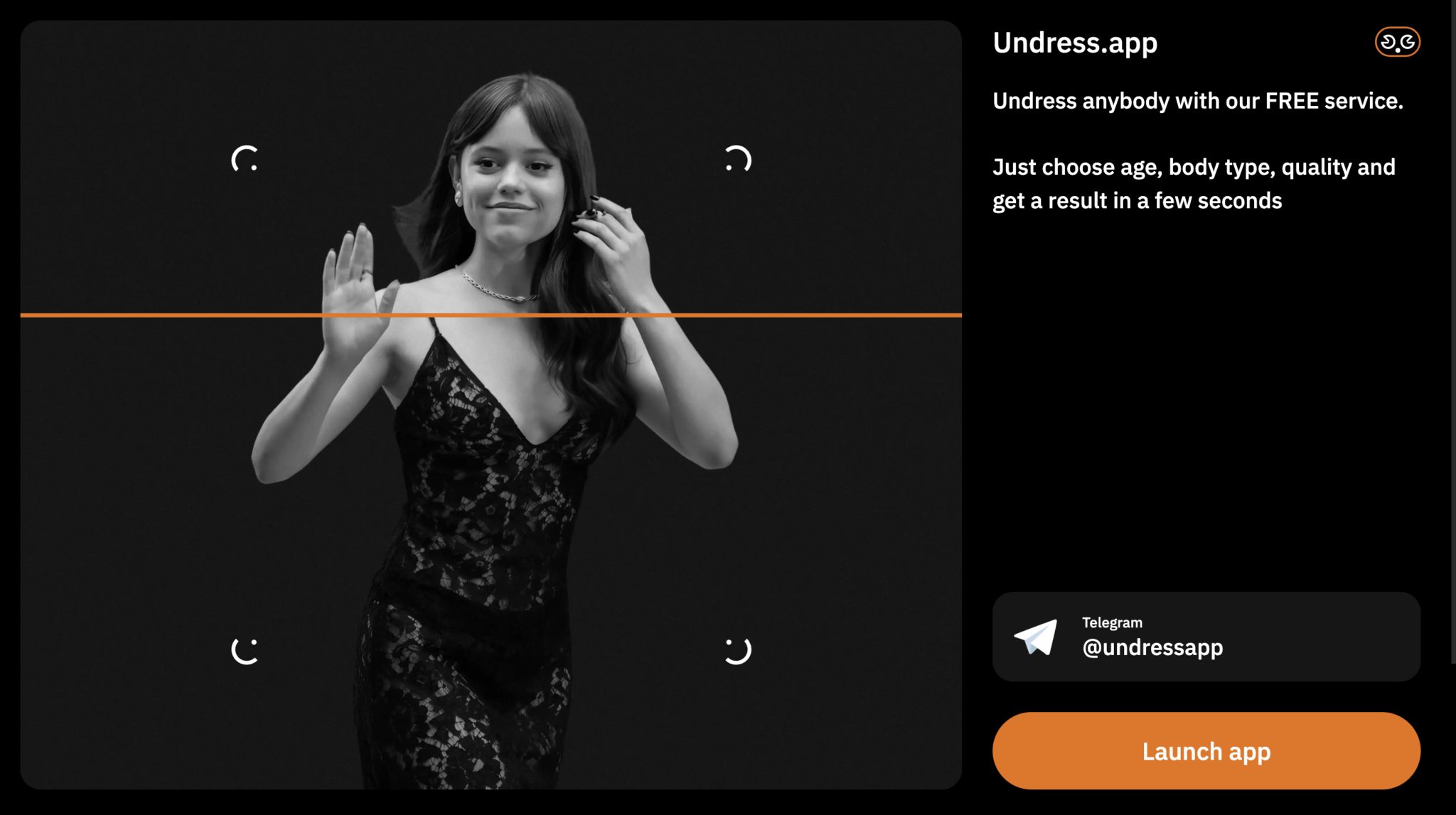Undressing App: The Controversial Trend That’s Taking The World By Storm
Have you ever heard about undressing apps? Yeah, it’s a thing now. These apps have sparked debates across the globe, raising questions about privacy, ethics, and technology misuse. If you’re curious about what these apps do and why they’re causing such a stir, you’ve come to the right place. We’re diving deep into this controversial topic and breaking it all down for you.
Let’s be real, technology has brought us some amazing advancements, but it also comes with its fair share of controversies. Undressing apps are one of those topics that have people talking—and not always in a good way. These apps use AI-powered technology to digitally remove clothing from photos, and yes, it’s as wild as it sounds.
Now, before we dive deeper, let’s set the record straight. This isn’t just about the tech itself—it’s about how it’s being used and the implications it has on privacy, consent, and safety. So buckle up, because we’re about to unpack everything you need to know about undressing apps.
- Ofilmywap Movie Downloads Is It Safe What You Need To Know
- Kirstentoosweet Leaks Whats The Buzz Find Out Now
What Are Undressing Apps?
Undressing apps are programs or software that use artificial intelligence to digitally alter images by removing clothing from individuals in photos. The technology behind these apps is surprisingly advanced, and while it may sound like something out of a sci-fi movie, it’s very much a reality today.
These apps have gained attention for all the wrong reasons. Critics argue that they pose a serious threat to personal privacy and can be misused to create non-consensual explicit content. Supporters, on the other hand, claim that the technology itself isn’t inherently bad—it’s all about how people choose to use it.
How Do Undressing Apps Work?
Here’s the science behind the magic—or the madness, depending on how you look at it. These apps rely on deep learning algorithms and neural networks to analyze images and generate realistic results. They essentially teach themselves by studying thousands of images, learning patterns, and then applying that knowledge to create altered versions of photos.
- Kyd Miller Duchovny What You Didnt Know About Davids Son
- Yado Yakub Career Family Marriage To Margaret Brennan Facts
Let’s break it down:
- Deepfake technology is the backbone of these apps.
- AI analyzes the structure of the body in the photo and generates realistic skin textures.
- The results can range from mildly convincing to eerily lifelike.
It’s important to note that the technology isn’t perfect. While it can produce impressive results, it’s not foolproof and often requires some level of human input to refine the final product.
Why Are Undressing Apps So Controversial?
The controversy surrounding undressing apps boils down to one major issue: consent. Imagine someone taking a picture of you, running it through one of these apps, and sharing the altered version without your permission. Sounds pretty messed up, right?
Here’s the kicker: these apps can be used to create non-consensual explicit content, which is a huge violation of privacy. Victims often find themselves in situations where their personal images are weaponized against them, leading to emotional distress, reputational damage, and even harassment.
The Ethical Dilemma
When it comes to undressing apps, the ethical questions are impossible to ignore. Should technology that can be so easily misused even exist? And if it does, who should have access to it? These are tough questions that don’t have easy answers.
Think about it—these apps blur the line between innovation and exploitation. On one hand, they showcase the incredible capabilities of AI. On the other hand, they highlight the dangers of unchecked technological advancement.
Who’s Using Undressing Apps?
It’s not just tech enthusiasts or hackers who are using these apps. Surprisingly, they’ve gained popularity among everyday users. People download them out of curiosity, for entertainment, or even as a tool for revenge.
Here’s a breakdown of the demographics:
- Young adults are the primary users, driven by curiosity and a desire to experiment with new technology.
- Some users employ these apps for malicious purposes, such as creating revenge porn or harassing others.
- Others use them for harmless fun, not realizing the potential consequences of their actions.
Regardless of the intent, the impact can be devastating. That’s why it’s crucial to understand the risks involved and approach these apps with caution.
Legal Implications of Undressing Apps
When it comes to undressing apps, the legal landscape is murky at best. Laws regarding digital privacy and consent vary from country to country, making it difficult to regulate these apps on a global scale.
In some regions, creating or distributing non-consensual explicit content is considered a crime. However, enforcement can be challenging, especially when the apps themselves aren’t illegal. It’s the misuse of the technology that lands people in hot water.
What Are the Penalties?
Penalties for misusing undressing apps can range from fines to criminal charges, depending on the severity of the offense. In extreme cases, perpetrators may face jail time for violating privacy laws or distributing illegal content.
Here are a few examples of legal actions taken against offenders:
- Individuals caught creating revenge porn have faced hefty fines and public shaming.
- Some countries have implemented stricter regulations to curb the misuse of AI-powered apps.
- Victims of non-consensual content sharing are encouraged to seek legal recourse.
It’s worth noting that laws are evolving to keep up with technological advancements, but there’s still a long way to go.
The Impact on Privacy and Safety
One of the biggest concerns with undressing apps is their potential to compromise personal privacy. In an age where sharing photos online is second nature, the risk of having your image manipulated is higher than ever.
Here’s how undressing apps can affect privacy:
- They make it easier for malicious actors to create fake content without consent.
- Victims may experience emotional trauma and reputational damage.
- Trust in digital communication is eroded as people become more wary of sharing photos.
Safety is another major concern. Victims of non-consensual content sharing often face harassment, bullying, and even threats. The psychological toll can be immense, leading to anxiety, depression, and other mental health issues.
Steps to Protect Yourself
So, what can you do to protect yourself from the misuse of undressing apps? Here are a few tips:
- Be cautious about sharing photos online, especially those that could be easily manipulated.
- Use strong privacy settings on social media platforms to control who can see your photos.
- Report any instances of non-consensual content sharing to the authorities immediately.
Education and awareness are key. The more people understand the risks associated with these apps, the better equipped they’ll be to protect themselves.
Is There a Bright Side to Undressing Apps?
Believe it or not, there are some potential benefits to undressing apps—if used responsibly. For example:
- Artists and designers can use the technology to create realistic digital art.
- Medical professionals might explore its applications in fields like plastic surgery or dermatology.
- Researchers can study the capabilities of AI and push the boundaries of technological innovation.
However, these benefits are overshadowed by the potential for misuse. Until there are stricter regulations and safeguards in place, the risks far outweigh the rewards.
Can These Apps Be Redeemed?
It’s possible that undressing apps could be redeemed if developers prioritize ethical considerations and implement robust safety measures. For instance:
- Integrating consent verification processes before generating altered images.
- Limiting access to the technology to prevent misuse.
- Partnering with law enforcement to monitor and address illegal activities.
Only time will tell if these apps can shed their controversial reputation and become a force for good.
Where Do We Go From Here?
The rise of undressing apps has sparked important conversations about the role of technology in society. As we continue to navigate this complex landscape, it’s essential to strike a balance between innovation and responsibility.
Here’s what the future might hold:
- Stricter regulations to govern the development and use of AI-powered apps.
- Increased awareness campaigns to educate the public about the risks of digital privacy violations.
- Advancements in technology that prioritize user safety and consent.
Ultimately, the responsibility lies with all of us—developers, users, and lawmakers—to ensure that technology serves humanity rather than harms it.
Conclusion
Undressing apps are undeniably controversial, and their impact on privacy, consent, and safety cannot be ignored. While the technology itself is fascinating, its potential for misuse raises serious ethical and legal concerns.
As we’ve explored in this article, the key to addressing these issues lies in education, regulation, and responsible use. By understanding the risks and taking steps to protect ourselves, we can navigate this complex terrain with greater confidence.
So, what’s next? We encourage you to share your thoughts in the comments below. Are undressing apps a necessary evil, or should they be banned altogether? Let’s keep the conversation going and work together to shape a safer digital future.
Table of Contents
Why Are Undressing Apps So Controversial?
Legal Implications of Undressing Apps
The Impact on Privacy and Safety
Is There a Bright Side to Undressing Apps?
- Freddie Highmores Wife Who Is Klarissa Munz Bio Facts
- Ai Undress Apps The Future Of Image Editing Top Tools

MYX The Ultimate Virtual Party! on SideQuest Oculus Quest Games

The case of an AI undressing app and the need for AI regulation

Kid dressing himself up, vector cartoon cute independent boy standing